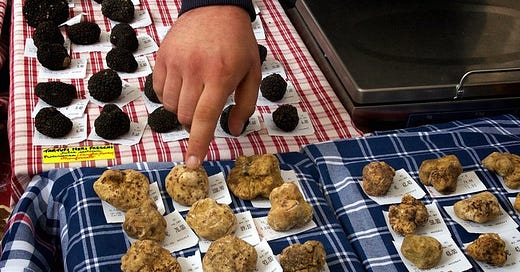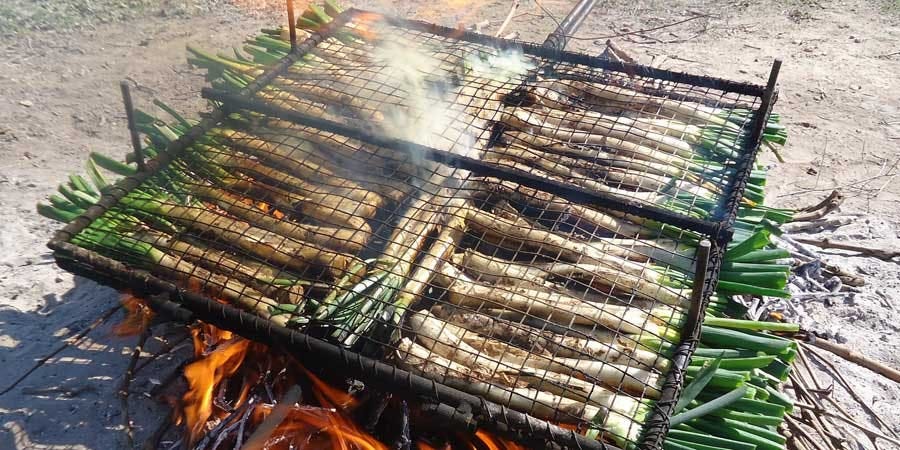Hello!
Thanks for joining us! The Ómós Digest is a reader-supported publication, of which all contributors are paid. Please consider supporting this continued writing, research, and expanding our amazing team by upgrading to a paid subscription for €5 a month or €50 a year. This newsletter brings you on that journey about the food you were looking for, or perhaps never knew existed. It is our quest to expand on what we don’t know and to share with those who care.
Bilberry mountain
Spring has sprung and at long last it feels as if the land is coming alive again. Across Europe, work accelerates in anticipation for the more fruitful months ahead. However, in certain parts (more so than others), the arrival of produce is marked with great celebration. Entire regions throughout the continent honour the seasons and their produce with festivals. In southern France, less than a month ago in the Menton region, La Fête du Citron took place, celebrating the arrival of the famous Menton lemon and marking the end of winter. From January through to March, Catalans celebrate Calçot, a tradition known as The Gran Festa de la Calçotada, where people gather and dine on calçot - a long green onion of sorts. The onions are grilled on charcoal then wrapped in wet paper and steamed, becoming sweet and tender. Served whole, they are dragged through romesco, a luscious emulsified sauce made from toasted ground almonds, red peppers, sherry vinegar and olive oil.
In Germany, regions await the coming of spring for the arrival of white asparagus. Known as ’Spargelzeit’, not ‘aspara-gate’, the population consumes over 125,000 tonnes of white asparagus each year (that’s 68 heaving Olympic swimming pools’ worth). It could be considered white gold during this time. In Southern France, the 1st of May is the beginning of the tomato season, where entire villages and towns convene to indulge in these summer fruits. Within the alpine regions of Northern Italy, there are mushroom festivals, where communities feast at long communal tables, tucking into dishes of pasta and rice-based dishes with truffles and cep mushrooms rightfully playing the central role. In 1996, in the neighbouring Emilia Romagna, the Italian mushroom fair was founded to promote local products and the surrounding area. It must have worked, with the help of Massimo (Bottura) of course, as Emilia Romagna is now regarded as the food valley of Italy, boasting over 44 PDO (Protected Designation of Origin) and PGI (Protected Geographical Indication) foods, like Parmigiano Reggiano, Parma ham and Mortadella Bologna, to name just a few. Alongside many of these festivals honouring produce and seasons, are fair programs that include wine and food events, cooking classes held by chefs, wine tastings, mycology lessons, meetings, sport, music, excursions, activities for children and magic shows.
Growing up in France as a child, I was fortunate enough to experience festivals like these first hand. It’s worth mentioning that despite being at the centre of it all, the food wasn’t always remarkable. Sometimes the tomatoes were a few weeks shy of ripening on the vine, the romesco lacked a kick or the cut of leg meat, sliced from the half beast cooked on a spit, was tough to swallow. But this was irrelevant. The festival was about the excitement for the season commencing. Tables of produce aplenty, ready to be consumed. Wine poured from the bag, the smell of sweet smoke from the enormous grills wafting throughout the town square, bad renditions of ‘Purple Rain’, sung by a lady with permed purple hair. These jovial gatherings are ancient in practice. A communal energy, marked by optimism, summoned from the ground up. An abundance of agriculture in clear sight and a welcome relief that the winter hardships and months of frugality and rationing have passed. It does make you think if people are willing to travel in their hoards to celebrate spring onions cooked in El Mundo newspaper, should we all not place the same appreciation on the arrival of such precious fare?
Irish Folklore Archives
Inspired by a recent visit to Co. Carlow, I learned about a food tradition from baker Seamus Jordan of Plúr bakery. Every August at the foot of Mount Leinster, the local community gathers to harvest bilberries (tiny wild blueberries). They dance, eat and drink to their hearts’ (and stomachs’) content, not 2 km from the bakery. Invigorated by this, last week I had a great pleasure to visit the national folklore archives in University College Dublin (UCD). The purpose of my visit was to discover whether there were more indigenous festivals or ceremonies in Ireland like those akin to Europe. Of course, I was familiar with the likes of Samhain and Imbolg - the Celtic festivals with traditions and customs well documented - as well as more food-oriented festivals like the Galway Oyster Festival. However, I wanted to find out whether there might be a history of festivities that specifically celebrated the arrival of seasonal ingredients.





